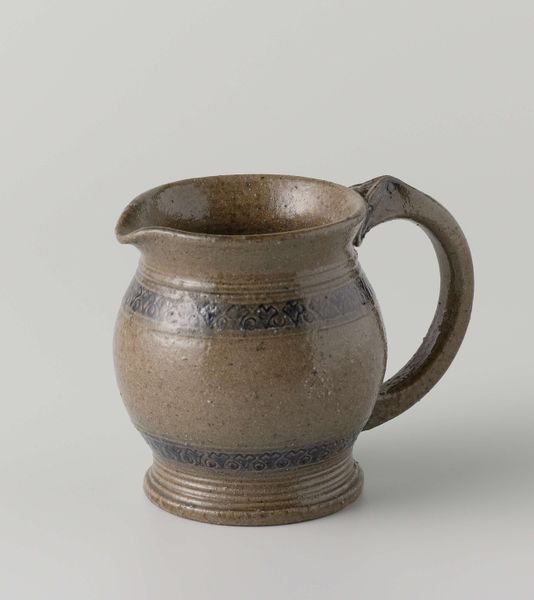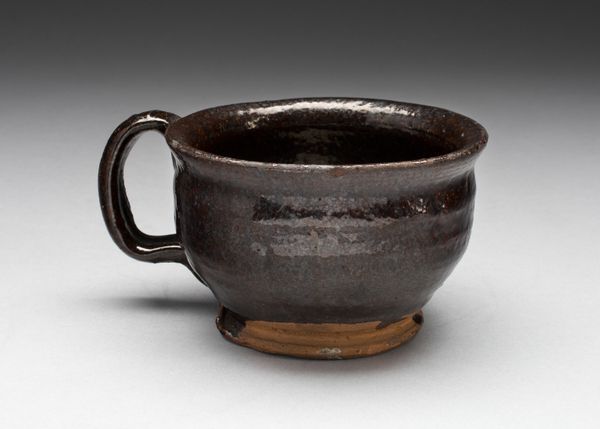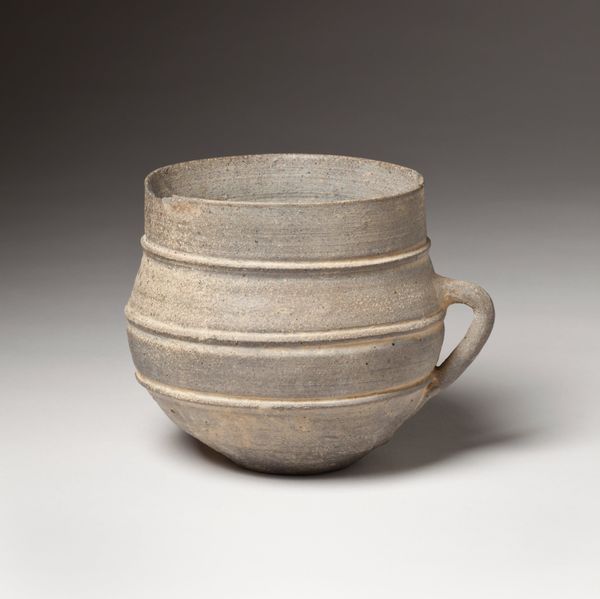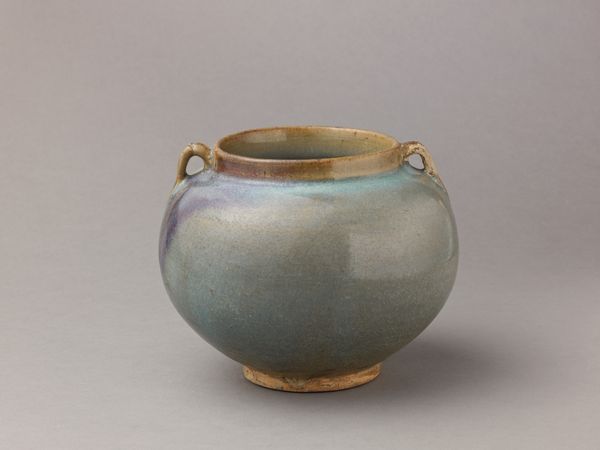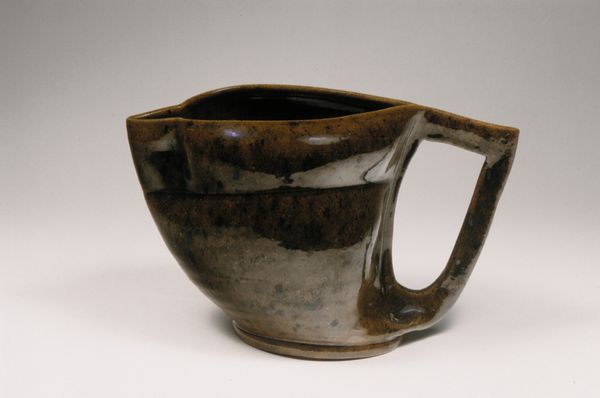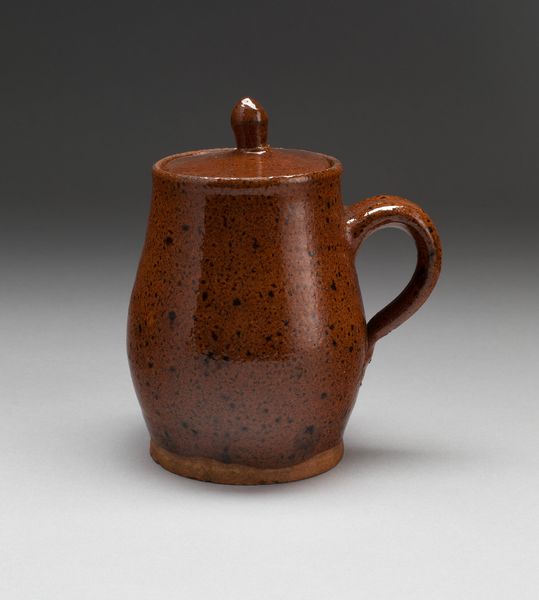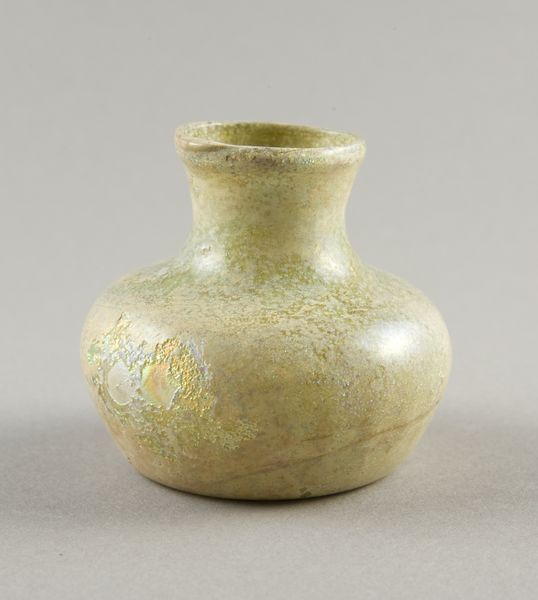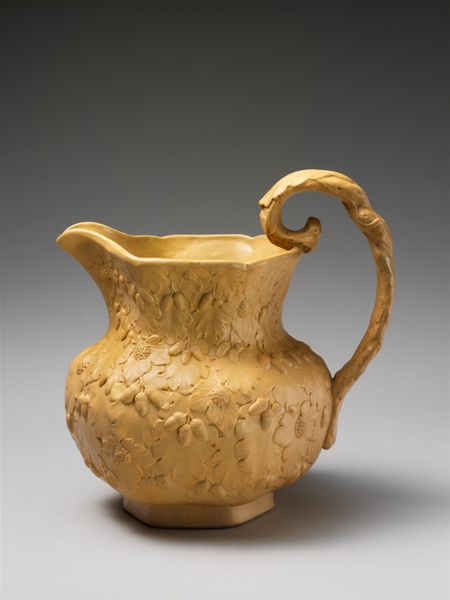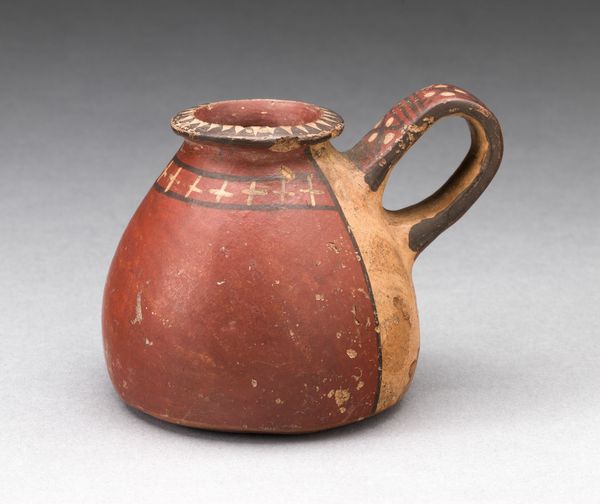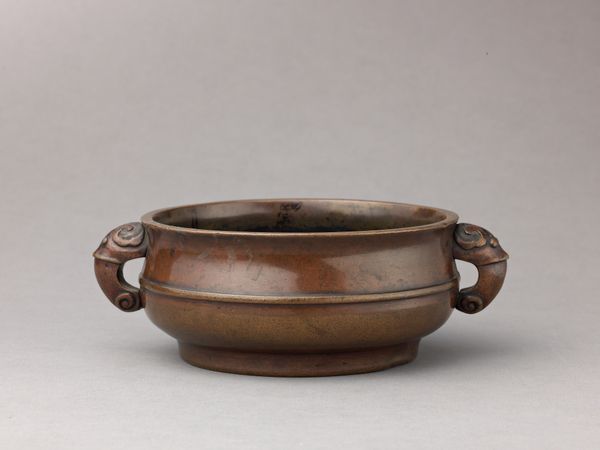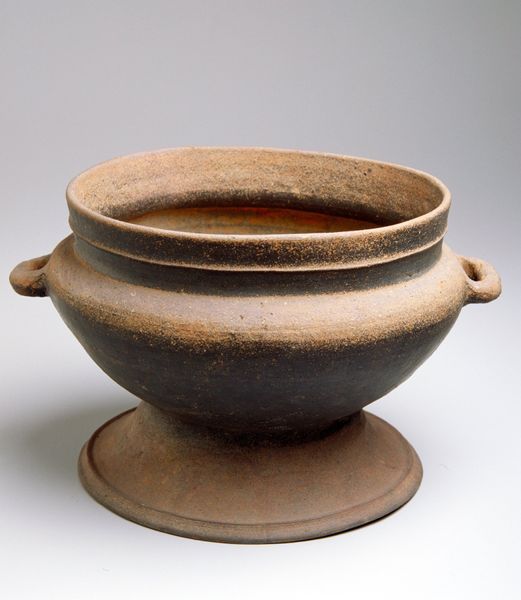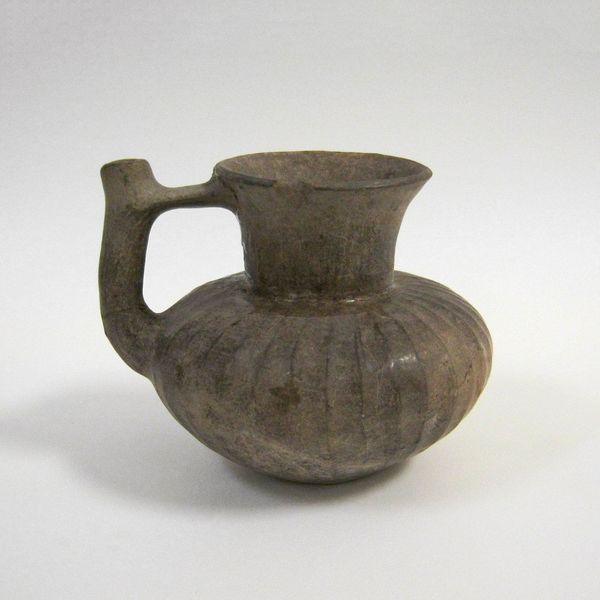
ceramic, earthenware
#
ceramic
#
earthenware
#
stoneware
#
united-states
Dimensions: 4 3/4 x 6 in. (12.1 x 15.2 cm)
Copyright: Public Domain
Curator: Before us is a “Pitcher”, dating from around 1877 to 1892. This earthy-toned piece, a product of Chelsea Keramic Art Works, resides here at The Metropolitan Museum of Art. Editor: It's remarkably stoic, isn't it? That somewhat muted celadon glaze over the ceramic gives it a practical feel, despite the rather unusual geometry. I can imagine this in a Shaker kitchen, despite the late 19th century origin, with its commitment to functionality over overt embellishment. Curator: That makes sense. We could frame it within the broader Arts and Crafts movement and its focus on utilitarian beauty, even if not directly affiliated. This movement certainly aimed at social reform, questioning the industrial revolution's impact. The design feels intentional – an assertion of crafted objects in a rapidly changing world. Editor: Exactly. You get the feeling of handmade integrity. It’s certainly not shouting from the rooftops. It presents a certain austerity, wouldn't you agree? What about the context of its use – what sort of social rituals would have involved a piece like this? Curator: It's difficult to say specifically. The emerging middle classes sought ways to emulate aristocracy. The act of carefully pouring and sharing water or beverage was refined, elevated from simply quenching thirst to a symbol of cultivated domesticity. Objects became critical. Editor: And there's a fascinating duality, isn't there? On one hand, the austerity suggests an ethical stand against materialism. On the other hand, the very presence of such a carefully designed object implies privilege. Consumption always implicates us in complex power dynamics. The design aesthetic hints at the broader politics of its period, in terms of class and gender. Curator: A pertinent point. By displaying and studying objects such as this, museums create new dialogues on use and meaning of utilitarian, mass produced goods that may have lost their social and political agency as cultural icons and totems. Editor: It reminds us that even something seemingly simple can hold layers of meaning and reflection. A call to engage in deeper introspection perhaps? Curator: Precisely. It is more than a mere object: it invites a critique of socio-cultural ideals around art.
Comments
No comments
Be the first to comment and join the conversation on the ultimate creative platform.
